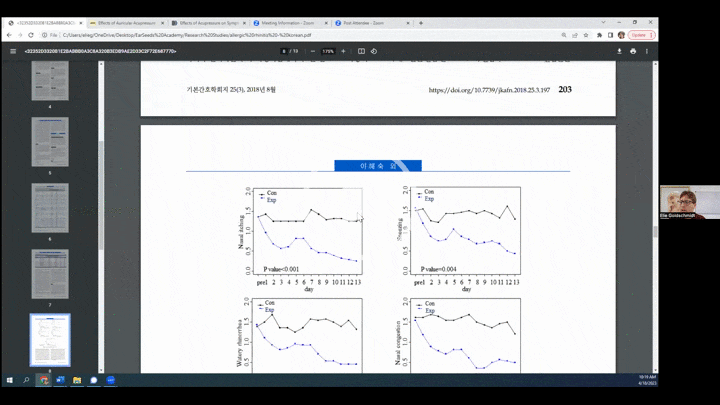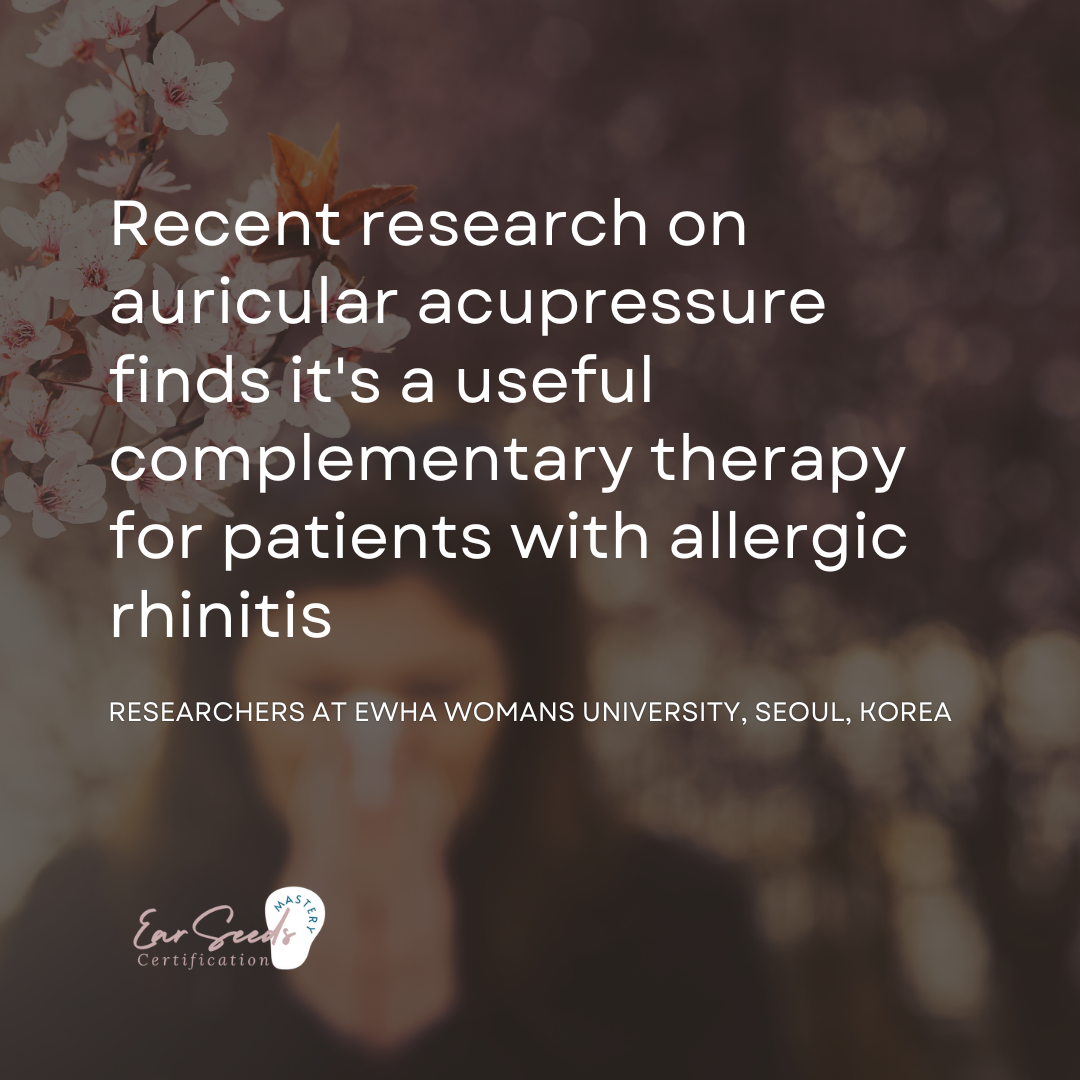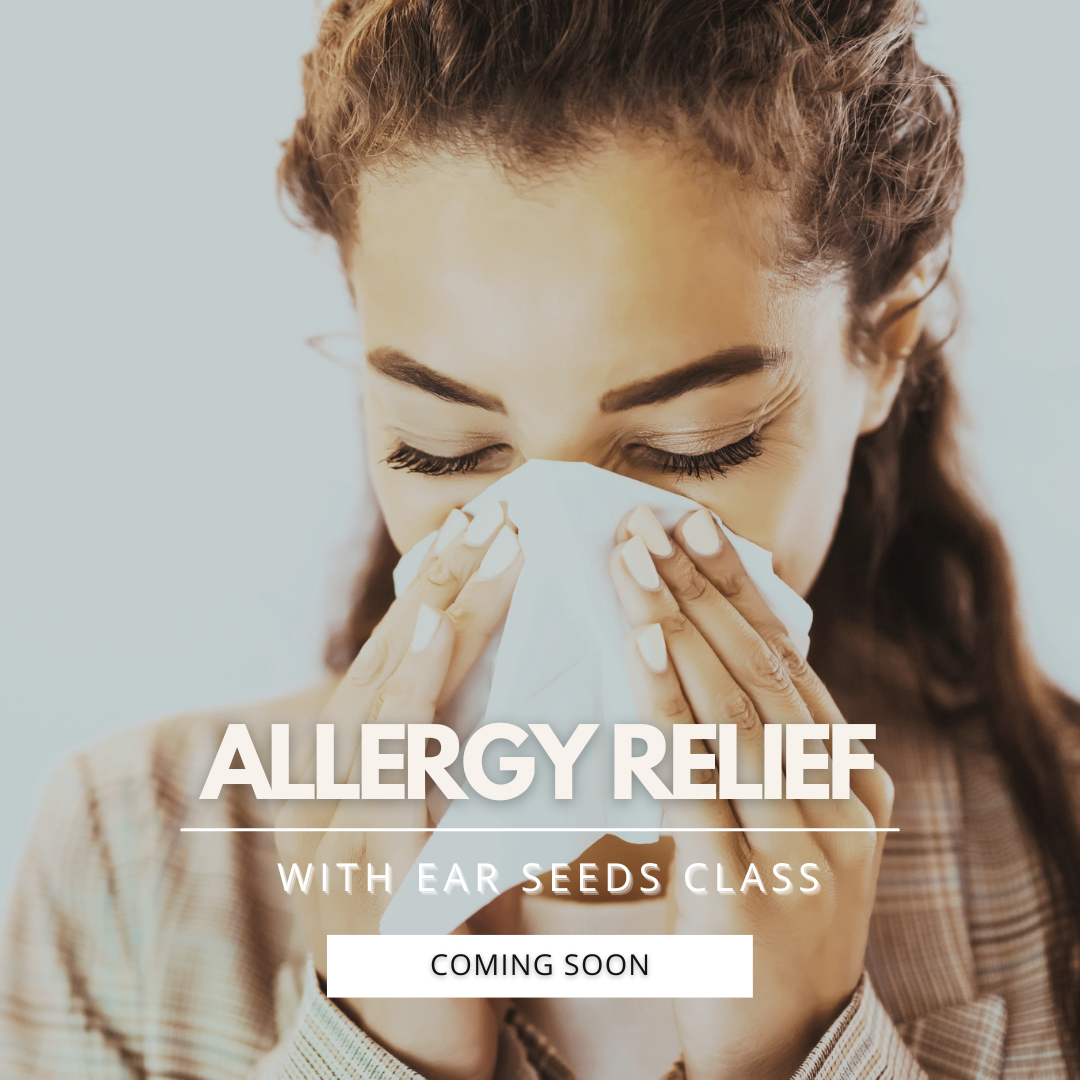The study titled "Effects of Auricular Acupressure on Symptoms and Quality of Life of Patients with Allergic Rhinitis" aimed to evaluate the effects of auricular acupressure on allergic rhinitis symptoms and quality of life in adults.
The study included 56 adult participants diagnosed with allergic rhinitis who were randomly divided into two groups. One group of 28 people received auricular acupressure treatment while the other group of 28 received sham acupressure treatment. Both groups received treatment twice a week for four weeks.
The results of the study showed that the auricular acupressure group had significantly greater improvements in symptoms such as nasal itching, nasal congestion, and sneezing compared to the sham acupressure group. Additionally, the auricular acupressure group showed improvements in quality of life measures such as sleep quality and emotional well-being.
This GIF shows the Results of the Research Study
The Lower Blue Line Showing Reduction in Symptoms

One interesting aspect of this study is that the researchers chose acupressure points that are not typically used for allergic rhinitis.
Instead of focusing on points that are traditionally associated with allergies, such as the ear apex or Allergy 1, the researchers used points that are known for their anti-inflammatory effects, using ear points endocrine, adrenal, and Shen Men points. They also used the Lung point, which is connected to the nose, and a less well-known point called Wind Spring, which is used for allergy symptoms.
This approach is interesting because it underscores the fact that auriculotherapy charts, developed by Dr. Paul Nogier in the 1950s, are based on Western anatomy and physiology rather than Traditional Chinese Medicine principles.
By understanding the underlying physiological principles of allergies and inflammation, acupuncturists and health professionals can broaden the scope of points selected and vary point protocols if needed.

This highlights the importance of tailoring treatments to individual patients and selecting points based on their physiological effects rather than solely relying on traditional use. The study's findings support the idea that auriculotherapy can be an effective treatment option for patients with allergic rhinitis and demonstrate the potential benefits of selecting points based on their known anti-inflammatory effects.
The researchers concluded that auricular acupressure could be a useful complementary therapy for patients with allergic rhinitis. The findings suggest that auricular acupressure may be an effective treatment option to reduce symptoms and improve the quality of life in adult patients with allergic rhinitis.
Based on our experience, acupressure with ear seeds to be an effective adjust to allergy treatments in children as well. In addition to the points in the study, we still recommend a basic allergy point protocol that includes Allergy 1, Allergy 2, inner nose, and sneezing points and adding on points for inflammation as needed.
Allergy Relief with Ear Seeding On-Demand Class
In this class, you'll learn about the five surprising auricular points used in the study and the reasoning behind why they were chosen for allergic rhinitis. But that's not all - we'll also cover additional ear points for allergy relief and how to support digestion and liver health to address the root causes of allergies.
You'll leave this class with a thorough understanding of how to use ear seeds for allergy relief and the confidence to apply this approach in both adults and children.

Ready to learn the power of auricular acupressure for allergy relief?
Sign up for our on-demand ear seed class today and discover a new and effective option for your clients.

Comments